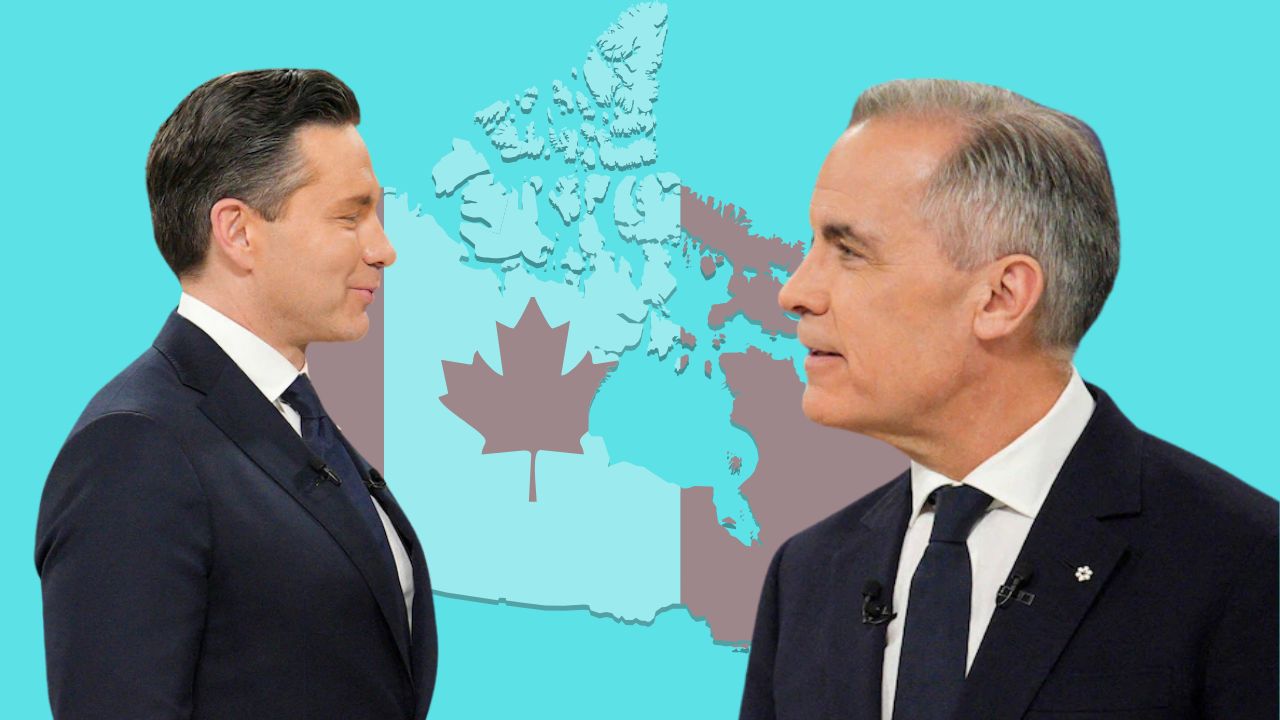Historic Turnaround: Liberals Defy Polls Amid Trump Factor
Mark Carney’s Liberal Party made a surprising gain in the polls as he led the Liberals to Victory In the 2025 Federal Election. Early results indicate the Liberals leading with 44 seats and the Conservatives trailing with 39 seats. The election is framed as a nationwide vote on Canada’s reaction to Trump’s trade threats and screeching annexation fantasies. Shocking, 7.3 million Canadian voters participated in early voting, a 25% increase compared to 2021.
Carney made bold statements as a reliable face against Trump, hitting Canada’s most sensitive nerves. The U.S. leader’s comments refreshed the Canadian people’s worst nightmare of making Canada the “51st state,” which angered the Canadian people. On the other side of the election, Poilievre repeatedly hit the campaign with Trump-based populist policy using Trumpist policies. Pierre’s attempts to avoid the divisive trade and sovereignty-nopolicy were unsuccessful.
Key Issues That Shaped the Vote
1. Economic Sovereignty vs. U.S. Pressure
The election was a proxy fight over Trump’s plans for a second term, especially his threats to put tariffs on Canadian goods and renegotiate trade agreements. Carney’s history as a Bank of Canada and Bank of England governor gave credibility to his claim that he would defend Canada’s economy. At the same time, Poilievre’s focus on domestic untax issues like tax cuts ignored voters’ geopolitical concerns.
2. Cost of Living and Housing Crisis
- Liberals: Pledged $25 billion on prefabricated houses and GST exemptions for first-time buyers.
- Conservatives: Offered to remove federal sales tax on homes up to $1.3 million and incentivize municipalities to cut construction taxes.
- New Democratic Party (NDP): Installed 3 million new homes by 2030 and implemented nationwide rent control.
- Bloc Québécois: Claimed provincial demands for housing autonomy were disregarded.
Criticism of these measures did little to improve housing; affordability remained a primary issue. Urban constituents harshly criticized the decade-long hold the Liberals maintained on power.
3. Climate Policy and Energy
Liberals had to defend their carbon tax in Alberta, where oil is big business, and the Conservatives took advantage of that anger by promising to increase oil and gas exports – a position that alienated some voters concerned about climate change.
Minority Government and Regional Conflicts:
- Quebec: The Bloc Québécois, having attained a pivotal role with a support base of 11 seats, is earning the province’s rights advocates’ support as they seek to widen the jurisdictional boundaries of their territorial governance.
- Ontario and British Columbia: Politically Charged Areas of Urban Centers Busy Cities aligned with Liberals, while the countryside had Conservatives
- Prairies: Conservative Alberta and Saskatchewan reflected turbulence with federally dictated climate policies.
As Canada stands, no single party is projected to achieve a majority. With a potentially predicted minority government sitting with four seats, a partnership with NDP or Bloc Québécois for legislative endorsement would become vital, with a required over 170-seat majority making unfavored alliances inevitable.
Unmatched Early Advance Voting
Reported combined early and record high mail-in submission ratios led to 7.3 million early ballots cast alongside 754,000 mail-in votes vying for concrete registration within ghettos fostered with relaxed civil liberties and aggressive urban youth policy along subdivision lines seeking to agitate potential urban homeowners.
Youth voters aged under 30 participating outperformed previously set ratio highs, being propelled by housing accessibility alongside climate policy declaration-related concerns, according to probabilistic-based outcomes.
Battleground suburban areas of Mississauga were shoulder urban locales turning a blind eye to muddled globalist voters with no background identifier to serve as multicultural surrogates for diverse vanguard multiethnic election backers.
Concerned Politically Engaged Youth Once Again Exhibit Heightened Through Monetary Access-Focused Setbacks
Brand new in politics, Carney faces pressure from Bene Park after Trudeau era ministers reloads need to juggle thoroughly tired voters and young, eager shows fused aides and voters fatigue.
Revised USMCA trade deal slashes polls paired with firearm threats incoming from Trump mark primary challenges for Carney, as pointed out in American-Canadian relations.
Heavily focused taxation concerning Low Income Declaration issuance packed CC11 sessions revolving around abolishing spending sanctions and slicing federal debt, or Canadian Conservative policies will usher in budget four after the unlocked session schedule assumes focus.
Election by the Numbers
| Party | Leader | 2021 Seats | 2025 Projected | Change |
|---|---|---|---|---|
| Liberal | Mark Carney | 160 | 160–170 | ±0–10 |
| Conservative | Pierre Poilievre | 119 | 140–150 | +21–31 |
| Bloc Québécois | Yves-François Blanchet | 32 | 30–35 | -2–+3 |
| NDP | Jagmeet Singh | 25 | 20–25 | -5–0 |
| Green | Elizabeth May | 2 | 1–2 | -1–0 |
Quotes From the Constituency
• Arif Virani (Liberal MP): “Carney’s vision of standing up to Trump and conflict escalation is something that voters are interested in.”
• Jason Kenney (Former Alberta Premier): “There is a new approach to dealing with Canadians, and Trump-Poilievre offered that.”
• Voter in Toronto: “For me, it was stability vs radical change. Voting Liberal was the result of being scared by Trump’s antics.”
A Nation at a Crossroads
The 2025 election showcases Canada’s dual identity crisis, juggling globalist ambitions under Carney and the nationalist impulses etched by Trump’s shadow. Even as results are still trickling in, one fact is indisputable: Canada will have a new government that will face the challenge of managing profound fractures in trade, housing, and climate disputes while seeking to maintain cohesion in a divided world.
You may read this: Vancouver Incident: Communication, Response, and Community Effect at the Lapu Lapu Day Festival
Information Sources:












